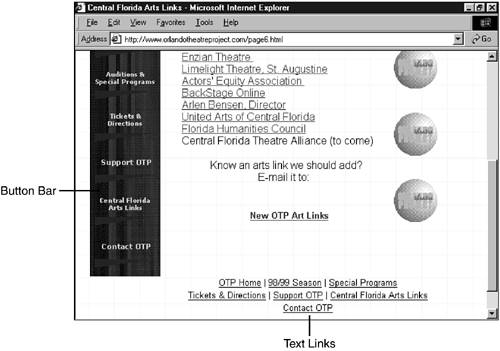Server-Side Versus Client-Side
| An imagemap can be written as a server-based, imagemapping script, or it can be coded into the HTML file itself to be run by the browser, or client . When the imagemap code is inserted directly into the HTML file, it's a client-side imagemap. When a script on the server is required, the code is a server-side imagemap.
Which should you create? Here's the full poop: Client-side imagemaps are much easier to create than server-side imagemaps. Client-side imagemaps work only when the page is viewed through an imagemap-compatible browser, but, fortunately, the overwhelming majority of folks online today use browsers that can handle client-side imagemaps. Client-side imagemaps are supported by
These browsers (which together represent about 90 percent of the browsers used on the Web) support not only client-side imagemaps, but also server-side imagemaps. A very small proportion of folks online ”those using graphical browsers other than the ones I listed ”cannot use client-side imagemaps, but can use server-side imagemaps. Of course, those using text-only browsers cannot use any kind of picture links, including any sort of imagemap, whether client or server. As you know from Chapter 28, writing scripts requires more technical expertise than most beginning Web authors care to develop. On top of that, publishing your scripts on a server requires close collaboration with the administrator of the Web server where your pages will be published to ensure that you write your script in a language the server supports and follow other rules that vary from server to server. Server-side imagemaps require much more work than client-side imagemaps and expand the reach of your page by only a tiny proportion. Given that, I recommend doing what most Web authors do these days:
Your client-side imagemaps will work great for nearly all visitors. And the text links will serve not only visitors whose browsers don't support client-side imagemaps, but also those with text-only browsers and those who have turned off the display of images in their browsers to speed up surfing. |
EAN: 2147483647
Pages: 350
